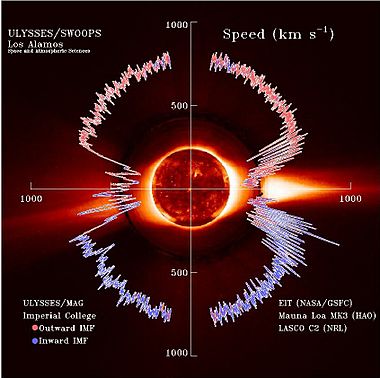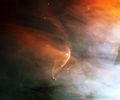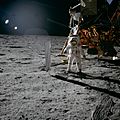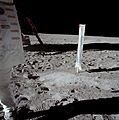Solar wind facts for kids
The Solar Wind is like a powerful breath from the Sun. It's a constant stream of tiny, super-fast particles. These particles are mostly protons and electrons, which are parts of atoms. They are also made of plasma, which is a hot, charged gas.

This wind shoots out from the Sun at incredible speeds. It's so fast that it can travel across our entire Solar System. It even helps create a giant bubble around the Sun called the heliosphere. This bubble protects us from harmful cosmic rays. However, these fast-moving particles can be risky for astronauts and spacecraft. Luckily, Earth's magnetic field acts like a shield. It soaks up or redirects much of the solar wind. This interaction is what causes the beautiful aurora, also known as the Northern Lights and Southern Lights.
Solar Storms and Earth
Sometimes, the solar wind isn't steady. It can have big bursts or disturbances. We call these events solar storms. A very strong solar storm can cause a geomagnetic storm here on Earth. This means it affects Earth's magnetic field.
One famous geomagnetic storm happened in 1989. It was so strong that it caused a huge power outage in Quebec, Canada. The entire province went dark! The biggest geomagnetic storm ever recorded was in September 1859. It was called the Carrington Event. If a storm that strong happened today, experts think it could cause trillions of dollars in damage. It could knock out power grids and satellites all over the world.
How Solar Wind Affects Comets
The solar wind also plays a big role in how a comet looks. When a comet gets close enough to the Sun, the Sun's heat makes some of its ice turn directly into gas. This process is called sublimation.
As this gas and space dust stream away from the comet, the solar wind pushes it. This is why a comet's tail doesn't just trail behind it like a car's exhaust. Instead, the solar wind always blows the tail directly away from the Sun. So, no matter which way the comet is moving, its tail always points away from our star.
Images for kids
-
The Parker Solar Probe saw "switchbacks." These are wavy disturbances in the solar wind that make the magnetic field bend back on itself.
-
Astronaut Buzz Aldrin next to the Solar Wind Composition Experiment during the Apollo mission.
-
The Solar Wind Composition Experiment set up on the Moon's surface by Apollo astronauts.
See also
 In Spanish: Viento solar para niños
In Spanish: Viento solar para niños










